This year marks the thirtieth anniversary of Irwin—the artistic group that was and still is a part of the wider art movement known as “Neue Slowenische Kunst” (NSK). NSK has dominated the Slovene art scene of the past few decades and has influenced many artistic practices throughout Eastern Europe. At first glance, the art practice of Irwin seems to be a specific version of postmodernism. Indeed, in their works Irwin artists combine quotations from different artistic periods, styles, and movements in a way that is typical of Postmodern art of the 1980s and ’90s. On the other hand, Irwin’s practice is different from Western postmodernism in many decisive respects.
Western postmodernism was a reaction against the Modernist canon—against the emergence of a new Modernist salon and the establishment of normative rules for the production and appreciation of art. In other words, postmodernism was a reaction against the academization of modernism. Indeed, in the mid-1970s the Modernist canon dominated Western art museums, institutions of art education, the art market, art history, and critique. The goal of postmodernism was to rehabilitate everything that was repressed and excluded by this canon: a certain type of figuration (Italian transavanguardia, German neo-expressionism), photography, cinema, performance, and so on. The same can be said of architectural postmodernism, which was directed against the Modernist architectural canon, and of literary postmodernism, which rehabilitated literary trash of all kinds. Postmodernism privileged reproduction vs. production, secondarity vs. originality, anonymity vs. individuality. However, Western postmodernism also had its own utopian dimension. Postmodernism dreamt of infinite flows of desire and information and of a “hive mind” or “crowd mind” that had the power to undermine every attempt to control and secure the meaning of individual signs: all these signs were supposed to be turned into empty, free-floating signifiers. Thus, even if Western postmodernism in its different forms was a reaction to late-Modernist formalism, it inherited a formalist attitude towards signs and images. All artistic forms were understood as zero-forms, devoid of any specific content or meaning. According to Postmodernist dogma, all content and meaning was permanently deconstructed by the anonymous processes of reproduction and dissemination. The only way to give meaning to art forms was to use them artistically in the here and now—the meaning of any particular form being totally dependent on its contextual use. And because all art forms were understood as empty—as mere forms without content—every individual artist had a right to combine and recombine them in every possible way. Thus, the famous “death of the author” was easily combined with the proclamation of unlimited artistic freedom and the vocabulary of forms inherited from the various artistic movements of the twentieth century. However, all these combinations and recombinations became, in the end, as empty as their individual parts.
The emergence of this type of postmodernism was not possible in Yugoslavia, nor anywhere else in Eastern Europe, because the conditions under which art was practiced there were completely different. First of all: the Modernist canon was never established, formalized, and institutionalized in Eastern Europe to the same degree that it was in the West. Even if Modernist trends were permitted in some Eastern European countries—or even welcomed, as in Yugoslavia—they did not have the same normative power as in the West. Here I mean the normative power supported by art institutions with an international reach, big money, and so on. But most importantly, art in general, and Modernist art in particular, was never totally depoliticized like it was in the West. In the Eastern European countries, public space remained controlled: the Postmodern vision of the totally free, potentially infinite flow of signs could never take hold there. Signs were not free-floating but politically charged—and the art forms that circulated in the same space were also politically charged. They were never experienced as empty signs that could get their meaning only through their individual artistic use.
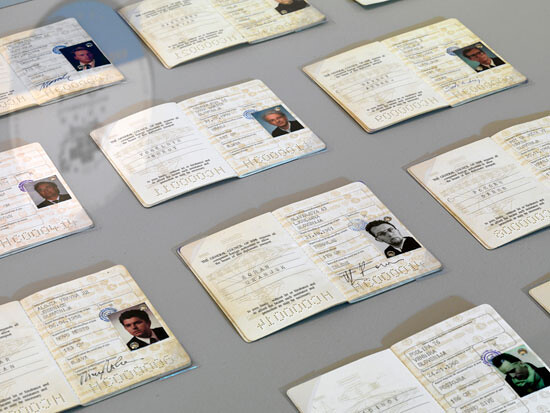

Living in a Communist country, one still felt a close connection to the artistic practices of the early avant-garde from the beginning of historical communism. For a late-Socialist subject, the black square of Malevich was not merely a self-referential image that initiated the international zero-style of geometrical abstraction. Rather, in the Socialist countries the black square, as well as other images from the early Russian avant-garde, signified the beginning of the Communist era, with all its utopian aspirations. Similarly, old realist images didn’t function as simple, politically innocent representations of landscapes or city scenes, but symbolized the national tradition that was partially denied and partially ideologically reinterpreted by the regime. The same can be said about Socialist Realism and Nazi art. And the same can be said about late-Modernist art. It was experienced not as a production of empty signifiers, but as a commitment to a Western orientation and Western cultural values. In other words, every use of this vocabulary of images manifested not the creative freedom of an individual artist, but a certain political stance within the sociopolitical field in which this artist lived. Thus, under Socialist conditions the artist could not, in the Western Postmodern manner, operate freely with empty art forms understood as language without content. Using a Heideggerian phrase, one can say that under socialism, die Sprache spricht (language speaks): the forms that the artist uses are always already ideologically charged. Their combinations are also ideologically charged—and so these combinations have their own message that not merely undermines but rather overdetermines any subjective artistic message.


1. Socialist and Post-Socialist Hybridity
When Heidegger says die Sprache spricht, he means that it is the community, the nation, that speaks through the artist because any language is basically always a national language. This is precisely the point at which the art strategies of Irwin and other late- and post-Socialist artists emerge. The event of historical communism produced a broken national identity in Eastern European countries. Communist ideology was and still is universalist and internationalist—in every country, its worst enemy was the local nationalism, which was regularly characterized as “bourgeois nationalism.” However, at the same time, the epoch of historical communism was defined by Stalin’s decision to build “socialism in one country.” From the beginning it became clear that the program of socialism in one country would lead to the rebirth of nationalism—and in a certain way, it did. The Socialist camp began to split along national lines: after Soviet communism we got Yugoslav communism, Chinese communism, Albanian communism, and so on—up to the Eurocommunism of the Italian and French Communist parties. However, these national communisms remained committed to a universalist message. In a certain way, this was already prefigured by the Stalinist definition of Socialist Realism: Socialist in content and Realist (in fact, national) in form. This definition presupposed, of course, that the Socialist content remained identical throughout all the different national forms. However, the national form began to shape and thus fragment the Socialist content. But this fragmentation did not produce a simple return to traditional national cultures—understood as specific, even idiosyncratic ways of life. Every particular communism had a claim to represent the universal and authentic truth of communism—interpreting the Communists of other countries as “revisionists.” Here the analogy with Christianity is obvious, as the latter was also split along national lines during the period of Reformation and religious wars. Yugoslavia understood its own national version of socialism as transnational—first of all because Yugoslavia was a union of several national republics, but also because Yugoslavia was an important member of the Non-Aligned Movement. Thus, late Socialist and post-Socialist national identity could not be taken for granted. Accordingly, the language, including the visual language, that artists were supposed to use was not given but reconstructed. Now let us consider what such a project of reconstruction actually means.
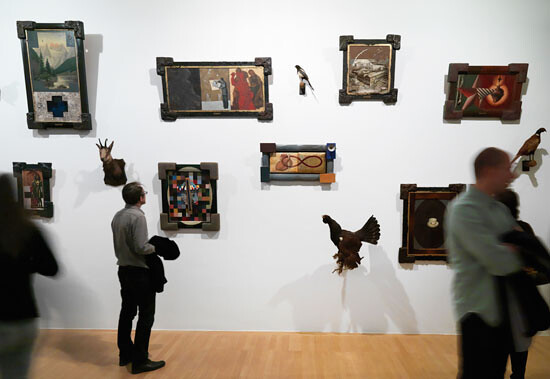

The goal of national reconstruction was explicitly formulated by the Irwin group at the beginning of its activities. It’s no accident that the word “retro-avant-garde” has been used to characterize Irwin’s practice and, more generally, NSK’s practice. “Avant-garde” here is basically constructivism. Reconstruction is the construction of the past for the future, and at the same time the construction of the future as work on the past. Retrospectively, one can say that Irwin and NSK did this work of reconstruction better than any other Eastern European artists or artist groups. There are different possible explanations for this. It may have been because Slovenian identity was broken at different places and along different lines; there was not only the Socialist, Yugoslavian past, but also the Nazi past, which could not simply be ignored: the Nazi past was related to a certain more traditional Germanness in Slovenian identity. It may have also resulted from the fact that the level of theoretical reflection and philosophical awareness was much higher in Slovenia than in other late- and post-Socialist countries. Whatever the reason, the Irwin group found a better solution to the problem of broken identity than many other artists and art theoreticians—in fact, the only possible solution. This solution was, like any true solution, very simple. Instead of trying to repair the broken identity, Irwin integrated into this identity the forces that were supposed to have broken it: the radical avant-garde, Socialist Realism, and Nazism. All these forces that had denied a separate identity to Slovenian art were interpreted by Irwin and NSK as forces that had modernized this identity. A certain combination of the revolutionary Russian avant-garde, Socialist Realism, and Nazi art retroactively became the image of the Slovenian avant-garde. Could one say that this Slovenian avant-garde never existed, that it was simply a later invention, a construction of the NSK? Yes and no. Yes, because all these phenomena were imposed on Slovenian cultural identity and not historically produced by it. And no, because even if all these ideological and artistic attitudes came from abroad, their particular combination was characteristic only of Slovenia, and not of any other place on Earth. So it is enough to reevaluate this combination, to perceive it as authentic, as being an integral part of the genuine historical fate of the Slovenian nation instead of being imposed from outside, to be able to reconstruct and not merely to construct the Slovenian avant-garde as a part of Slovenian cultural identity. And that is precisely what NSK did.
In this way Irwin also substantially expanded the field of art forms available to artists living under standard conditions of postmodernity. At first glance this seems paradoxical because Irwin has operated in the relatively closed late-Communist/post-Communist ideological space. But this expansion of artistic vocabulary has its explanation. Indeed, the Postmodern free and allegedly unlimited play of empty, or rather floating, signifiers was based on its own rules of exclusion and censorship. The ideologically motivated art of Socialist Realism and Nazi art was excluded from this play of signifiers. The explanation for this exclusion is simple enough. One had moral scruples when emptying art forms of their content, and the content of Socialist Realism and Nazi art seemed too toxic, too contagious to be completely removed through the operation of aesthetic purification. This is why the Holocaust and other crimes of the twentieth century were proclaimed to be “unrepresentable.” One feared that if the related images were allowed to join the multitude of modern art forms, they would in turn be deconstructed and emptied, and would begin to function as pure aesthetic objects. In this way their toxic, contagious character (which will never really go away) would become neglected—and thus, these images could slowly infect the whole field of modern art forms. This anxiety regarding the infection of aesthetic form by ideological content is still so strong that images from the period of Socialist Realism and Nazi art are still excluded from the contemporary system of art representation. Here we have a pretty strong form of censorship. But the same form of censorship also has weak versions. For example, when I traveled through Middle America I saw a lot of artworks from the period of the New Deal—with explicitly progressive, political, ideological content. These artworks (mostly murals, especially by Thomas Hart Benton) are hardly represented in standard American art history—one struggles to find catalogues or books about them.
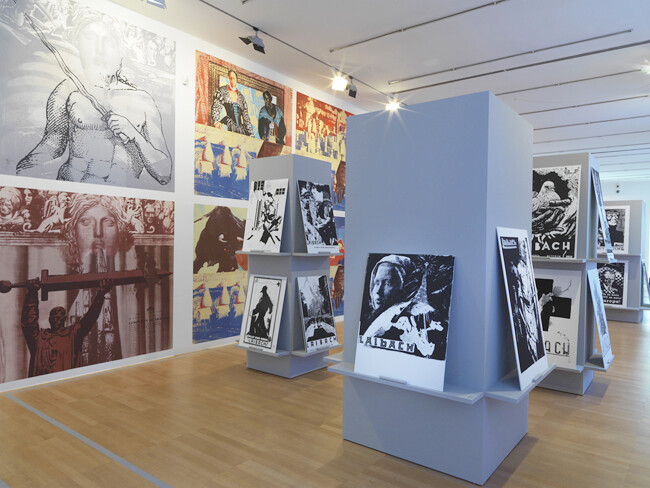

For Irwin this ideological, toxic character of artforms referring to totalitarian regimes was not such a problem—because for Irwin all art forms are ideological and toxic to the same degree. Irwin does not see art forms as empty signifiers—and thus Irwin has no reason to suppress certain images as ideological. So Irwin shows that if we accept that all signs are ideological to the same degree, we become much freer in our choice of artistic forms and means than if we believe that signs can or must be empty. The remobilization of signs from the early avant-garde as well as totalitarian art was used by Irwin to give more energy to their project of reconstructing Slovenian national cultural identity. “Retro-avant-garde” here means not only the reenactment of certain avant-garde attitudes and gestures, but also—and maybe primarily—the influx of avant-garde energies into Irwin’s artistic practice. The general mood of postmodernity was a certain melancholy after the end of the love affair with utopia. However, the project of reconstructing Slovenian national identity required some utopian energy—energy that Irwin got from the sources of radical modernity.
One can ask, of course, whether we need national cultural identities at all today—be they broken or unbroken, simple or hybrid. Is it not better to swim in anonymous flows of information and operate globally in our time of globalization? Yes, today we live in the age of globalization and the internet. Both are effects of the end of the Cold War and the erasure of the ideological divide between the West and the East. However, instead of producing the infinite flows of desire and information that were supposed to undermine and ultimately kill the Modernist subject of self-reflection and self-control, the internet has delivered an almost unlimited power to algorithmically organize surveillance and control. The cultural aspect of globalization also hasn’t turned out the way many people initially expected.
In fact, contemporary globalization is the direct opposite of the modern ideal of internationalism and universality. The world of globalization is not a world of international solidarity or shared cultural values. Nor is globalization the realm of the anonymous “crowd mind” as it was celebrated by postmodernism. Rather, it is the world of the global competition of everybody against everybody. This competition pushes the subject who participates in it to mobilize his or her own human capital. And human capital, as described, for example, by Michel Foucault, is primarily the cultural heritage that is mediated by the family and milieu in which an individual grows up. That is why the contemporary logic of globalization, unlike Modernist internationalization and universalization, leads to cultural conservatism and an insistence on one’s own cultural identity. The combination of globalization and extreme cultural conservatism defines the politics and art of our time.
My Western colleagues ask me from time to time: How are the Russian and Eastern European artists doing—did they already move on from Communist and post-Communist times? This question actually means: Have they already forgotten the repressions and traumas of communism and become what they always were—Polish, Slovenian, or Russian? From this perspective, for Eastern European artists to move on means, in fact, to go back—back to a national cultural identity before it was allegedly repressed and distorted by communism. Here, of course, emerges the question of how far they have to go back to be able to rediscover and reappropriate their own cultural capital. Obviously, Russians have to go back to at least 1916. Maybe to 1913. This means that on the way to post-Communist normalization and globalization they have to abandon and subtract from their cultural capital almost the whole twentieth century. The situation of other post-Socialist countries is not so dire—they have to go back merely to the period before World War II. But they still lose several decades—and, in terms of cultural capital, this is not such a negligible amount of time.
Thus, today the old line between the West and the East reemerges in a different form. The West is not supposed to subtract certain periods of its cultural history from its cultural capital (maybe the only exclusion here is the German art of the Nazi era). This produces obvious inequality in the conditions of cultural accumulation and capitalization. However, on the level of official cultural policy, this Western point of view has also been adopted by Eastern European countries. This culturally conservative discourse currently dominates the public scene in Russia. But also in Eastern Europe, communism is understood mostly as a mere interruption, interval, or delay in the so-called normal development of these countries—a delay which, once it was over, left no traces other than a certain appetite to “make up for lost time” and build capitalism of the Western variety. The project of building capitalism through the erasure of the leftovers of communism reminds one of the well-known politics of erasing the leftovers of capitalism, with the goal of building communism.
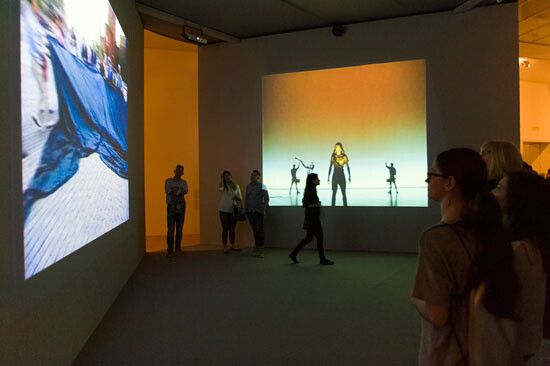

One can say that this is the anti-Communist perspective on the phenomenon of Eastern European “real socialism.”However, Western leftist intellectuals share this perspective, even if they do so for different reasons. When it came to the Soviet Union, Western intellectuals were convinced that they understood Marxism much better than Russians did—and this insight was enough for them to see the entirety of Soviet culture as a historical mistake. So for them, any further investigation of Soviet culture made no sense because it was clear from the beginning that this culture was based on an interpretation of Marxism that was simply wrong (dogmatic, primitive, and so forth). State socialism of the Soviet variety was seen as a perversion and a betrayal of the Communist ideal, a totalitarian dictatorship that was more a parody of communism than its true fulfillment. Thus, from the position of the Western Left, real socialism also looks like a mere delay—this time, a delay in the development of the communist ideal. Thus, there is a consensus among the Left and the Right in the West that the Eastern European Communist experiment should be forgotten. Both the Left and the Right reject “historical communism,” or “national communism,” or “communism in one country” because it offers a peculiar mixture of particular national traditions and the universalist Communist project. The conservatives hate communism for contaminating the national traditions that they want to purify from everything Communist. And the Neo-Communists want, on the contrary, to remove all the elements of Russianness, Chineseness, and so on, to restore the Communist ideal in its absolute purity.
Indeed, Stalin’s project of building socialism in one country led to the hybridization of communism and nationalism—and thus to a certain folklorization of communism and the artistic avant-garde. By “folklorization” I mean the integration of Communist ideology and avant-garde art into networks of legends and myths that constitute the historical memory of a particular people, or rather a particular nation. Socialist revolutions inscribed political utopias and the artistic avant-garde into the mass culture of the countries in which these revolutions took place, to a degree that was unthinkable for the countries of the West. For a contemporary post-Soviet citizen there is no basic difference between Malevich’s black square, Mayakovsky’s yellow vest, Lissitzky’s red wedge that beats the whites, and jokes about Chapaev and Pet’ka.
The emergence of this new folklore, or “kitsch,” was diagnosed by Clement Greenberg in his famous essay “Avant-Garde and Kitsch” from 1939. At the end of this essay Greenberg formulates the hope that the avant-garde will be saved by international socialism, i.e. Trotskyism. André Breton, in his manifesto-like text “On the Time When the Surrealists Were Right” (1935), takes a similar position. He quotes the somehow naïve-sounding letters about loving one’s mother and respecting one’s parents published in Komsomolskaya Pravda as a reason for his final break with the Soviet Union. (Obviously these letters were kitsch for him.)
However, it is precisely this Socialist/post-Socialist folklore, or if one wants, kitsch—this mixture of Communist tradition and national cultural identity—that is used as material by many contemporary Russian and Eastern European artists. Irwin is here again an especially good example because they practice the folklorization of the avant-garde in a very systematic and conscious manner, combining avant-garde images with heavy, traditional-looking frames, placing them together with deer heads and thus referring to the atmosphere of a provincial stube, and so forth. One speaks about modern antiquarianism. Irwin makes modern folklore.
It is possible to find other examples of this folklorization of modernity all across Eastern Europe. The use—or better yet, the production—of folklore is a Romantic tradition. At the beginning of the nineteenth century, romanticism was a reaction to the collapse of the universalism of the French Enlightenment and the failure of the French Revolution. Romantic poetry and art, with their mixture of desire and horror, the beautiful and the sublime, were manifestations of nostalgia for revolutionary times. Our time—the time after the end of the great universalist projects and secular utopias of the twentieth century—very much reminds one of the nineteenth century: it is dominated by the same combination of open markets, nationalism, and cultural conservatism. Under these conditions only art is able to maintain the memory of the hybrid, national communisms of an earlier time. And it is precisely this memory that constitutes the main cultural capital of contemporary Eastern European artists and writers.
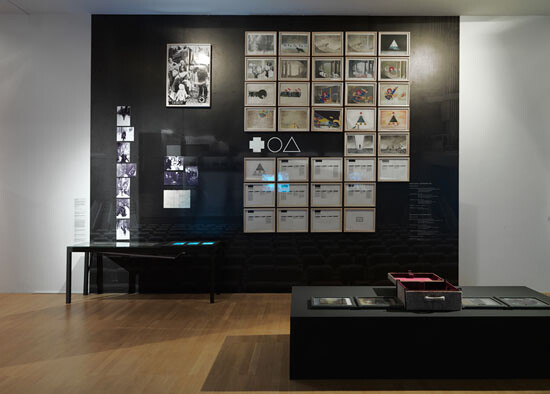

2. The NSK State
Among many other things, this memory is a memory of a Communist internationalism that was formulated in opposition to the project of globalization, understood as the creation of open global markets—the process of economic globalization initially started and, as stated above, was partially realized already in the nineteenth century. At that time—or even earlier, in the eighteenth century—emerged the correlative project of a world culture in which all particular national cultures would be included and dissolved. This vision of world culture is, of course, a fascinating one. However, the question remains: Can this vision be realized by the power of open markets alone? Of course, cultural products, like all other cultural commodities, have become globally accessible. But cultural products are not consumed like other commodities. If I consume bread, it disappears after I eat it. If I buy a car, it becomes my property and can be used—and also ruined—only by me. However, cultural products are consumed in such a way that they do not disappear in the act of consumption. Thus, they need archives to be preserved—libraries, museums, universities. Open markets are not able to create and sustain such cultural institutions—this is a task, historically and today, for national states. Art and culture in general function today in this ambivalent situation: they are globalized as commodities but remain preserved as parts of national cultural heritage. There are no international museums, libraries, or universities. Of course, one can argue that the internet is such an international archive—and this is partially true. But the internet is based on the following simple principle: it answers the questions that you ask it. The internet does not give you information that you do not want to know. And people usually ask for information they are taught to ask for. In this sense the internet cannot substitute for national educational institutions. Beyond this, the internet is in private hands—and thus reflects the cultural identity of the American corporations that own it. Irwin’s answer to this situation was the creation of the NSK state. Here we have the rehabilitation, or the artistic reenactment, of the Hegelian/Marxist idea of a universal state, which already in the nineteenth century was opposed to the capitalist vision of globalization.
At the beginning of the 1990s, a book that seemed to capture the mood of the time was Francis Fukuyama’s The End of History and the Last Man (1992). This book was mostly interpreted as a celebration of the victory of the West over historical communism and the impossibility of further social change. In fact, the book was not celebratory but rather pessimistic (“the last man”). The figure of the end of history was initially formulated by Alexandre Kojève in the lectures on Hegel’s Phenomenology of Spirit (1807) that he gave at the École des Hautes Études in Paris from 1933 to 1939. This course was regularly attended by leading French intellectuals such as Georges Bataille, Jacques Lacan, André Breton, Maurice Merleau-Ponty, and Raymond Aron. The transcripts of Kojève’s lectures circulated in Parisian intellectual circles and were widely read, notably by Jean-Paul Sartre and Albert Camus. Fukuyama was a student of Leo Strauss, who himself admired Kojève but believed that Kojève described the end of history too optimistically—due to the influence of Marx and his historical optimism. Strauss followed Nietzsche in believing that the post-historical mode of existence is the realm of the last man, the realm of decay and decline. Actually, at the end of his life Kojève also became much more skeptical about the post-historical condition. Fukuyama shares this pessimistic viewpoint and follows Kojève very closely in his interpretation of history and its end. However, he misses the central point in Kojèvian discourse. For Kojève the end of history is marked by the emergence of a universal and homogeneous state. The end of history means political and not merely economic globalization. So from the Kojèvian point of view we are still not at the end of history. The universal state remains utopian—it has to be implemented, but it has not been implemented yet.
The NSK state is precisely such a utopian universal state, built on the territory of art. What the artists practice here is a kind of Romantic bureaucracy—the artist becomes a bureaucrat, a clerk of the nonexistent universal state. In his famous essay “La trahison des clerks” (The Betrayal of the Clerks, 1927), Julien Benda aptly described the ethos of post-Hegelian modern bureaucracy. He named its members “clerks.” The word “clerk” is often translated as “intellectual.” But in fact, for Benda the intellectual is a traitor of the clerk’s ethos, because the intellectual prefers the universality of his or her ideas to the duty of universal service. The true clerk does not commit himself to any particular worldview—even to the most universalist one. The clerk, rather, serves others by helping them to realize their own particular ideas and goals. Benda saw the clerk primarily as a functionary, as an administrator in the framework of the enlightened, democratic state that is ruled by law.
Today the state—even if it is internally organized in the most universalist way—remains a national state. Its clerks, notwithstanding their universalist ethos, are necessarily embedded in the apparatuses of power that pursue particular, national interests. This embeddedness is one of the reasons why the traditional clerk ethos, as described by Benda, has become utopian.
One can argue that the contemporary artworld tries to compensate for the lack of a universal state. Here one has to remember that Kojève was not only a follower of Hegel but also a nephew of and commentator on Kandinsky. Indeed, there is an inner affinity between the modern state and modern art: both believe in the predominance of form over content. The modern state is a form—a beautiful form. The true bureaucrat—or true “clerk”—serves this form before he loves it, because his thinking is formalistic through and through. The bureaucrat who serves not the form but the “content,” be it the content of his own desires or the desires of others, is a corrupt, bad bureaucrat. The same can be said about the Modernist artist: he serves the form and tries to avoid corrupting it through his personal psychology or through external influences, motives, interests, and goals. As stated above, Conceptual and even Postmodern art inherits this service to pure form. Of course the artist, as also a bureaucrat, cannot be completely immune to corruption through content of different kinds. But both see their profession as an attempt to resist this corruption and to serve the beautiful form of art or the state as selflessly as possible. This concerns not only the creation but also the presentation of art in public space—the task in which art and politics necessarily collaborate.
In this respect the figure of the independent curator is especially interesting. Earlier curators were appointed by the state. Today, so-called international curators appoint themselves. In their curatorial practice they navigate among many private, institutional, and local interests, but their goal is to create an image of international art. In this sense they act as appointees of a nonexistent universal state. The contemporary international curator is a Romantic bureaucrat. NSK creates not merely a curatorial program but a Romantic state in which every participant—every curator or writer or artist—becomes a bureaucrat, one who is responsible for the well-being of the state, and who is selfless and conscious of his or her social duties. This artistic appropriation of the state and state bureaucracy seems paradoxical because the artist is supposed to be an anarchist. But anarchy and institutional critique are good when there are art institutions. In Eastern European countries though, art institutions are not very strong—and the art market is not especially powerful. In this situation artists have to create art institutions themselves—together with the state that is theoretically responsible for maintaining these institutions. Here again the artists of Irwin demonstrate their precise grasp of the current cultural and political situation; they thus announce the era in which all people will become citizens of their state—or of any other universal state.